1776 – Hessian Lieutenant General Wilhelm von Knyphausen and a force of 3,000 Hessian mercenaries and 5,000 Redcoats attacked Fort Washington at the northern end and highest point of Manhattan Island.
The Patriots were overwhelmed, and the garrison commander, Colonel Robert Magaw, surrendered. Nearly 3,000 Patriots were taken prisoner. Many later died from deprivation and disease aboard British prison ships anchored in New York Harbor.
Among the 53 dead and 96 wounded Patriots were John and Margaret Corbin of Virginia. When John died in action, his wife Margaret took over his cannon, cleaning, loading and firing the gun until she too was severely wounded. The first woman known to have fought for the Continental Army, Margaret survived, but lost the use of her left arm.
1907 – Indian Territory and Oklahoma Territory collectively entered the United States as Oklahoma, the 46th state. All Indians in the state automatically became U.S. citizens.
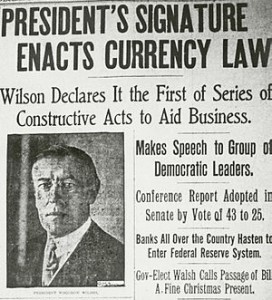
1914 – The Federal Reserve Banks opened for business. In response to a financial crisis known as the Panic of 1907, a private conglomerate (led by J.P. Morgan) had set themselves up as “lenders of last resort” to banks in trouble. That effort succeeded in stopping the panic, and led to calls for a Federal agency to do the same thing.
In response, the Federal Reserve System was created by the Federal Reserve Act of December 23, 1913, establishing a new central bank intended to serve as a formal “lender of last resort” to banks in times of liquidity crisis – panics where depositors tried to withdraw their money faster than a normal fractional-reserve-based bank could pay it out.
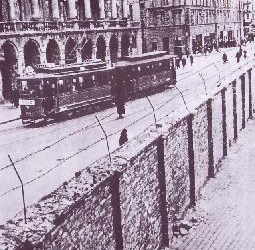
1940 – The Nazis closed the Warsaw Ghetto to the outside world with a ten-foot high wall topped with barbed wire. During the next year and a half, thousands of Polish Jews were brought into the Ghetto, but diseases (especially typhus), and starvation kept the inhabitants at about the same number. The average food rations for Jews in Warsaw were limited to 184 calories.
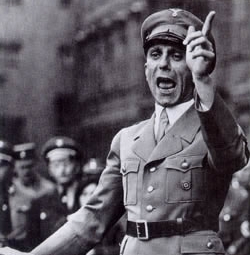
1941 – Joseph Goebbels published his screed of hate in the German magazine Das Reich that “The Jews wanted the war, and now they have it”—referring to the Nazi propaganda scheme to shift the blame for the world war onto European Jewry, thereby giving the Nazis a rationalization for the so-called Final Solution.
Just two days earlier, British Prime Minister Winston Churchill, having read more than a dozen decoded messages from German police which betrayed the atrocities to which European Jews were being subjected, had written in a letter to the Jewish Chronicle that “The Jew bore the brunt of the Nazis’ first onslaught upon the citadels of freedom and human dignity. He has not allowed it to break his spirit: he has never lost the will to resist.” Active Jewish resistance was increasing, especially in the USSR, where Jews were joining partisans in fighting the German incursions into Russian territory.
But it was proving too little too late. Goebbels, Heinrich Himmler, and the rest of Adolf Hitler’s henchmen carried out with fanatical glee the “elimination of the Jews,” using propaganda and anti-Bolshevik rhetoric to infuse SS soldiers with enthusiasm for their work. As Goebbels wrote in Das Reich, “The prophecy which the Fuhrer made… that should international finance Jewry succeed in plunging the nations into a world war once again, the result would not be the Bolshevization of the world, but the annihilation of the Jewish race in Europe. We are in the midst of that process. Compassion or regret is entirely out of place here.”

1944 – The city of Duren, Germany was completely destroyed by Allied air bombings. 22,000 people lived in the city at that time and 3,000 of them died during the bombing.
1945 – In a move that stirred up controversy, the United States shipped 88 German scientists to America to assist the nation in its production of rocket technology. Most of these men had served under the Nazi regime and critics in the United States questioned the morality of placing them in the service of America.
Nevertheless, the U.S. government, desperate to acquire the scientific know-how that had produced the terrifying and destructive V-1 and V-2 rockets for Germany during WWII, and fearful that the Russians were also utilizing captured German scientists for the same end, welcomed the men with open arms.
Realizing that the importation of scientists who had so recently worked for the Nazi regime so hated by Americans was a delicate public relations situation, the U.S. military cloaked the operation in secrecy.

1957 – Notre Dame beat Oklahoma 7-0, ending the Sooners’ 47-game, 1,512-day college football winning streak. The game also marked the first time in more than 120 games that Oklahoma didn’t score a single point. Sooners fans were stunned. Some cried; some sat in the stadium for more than an hour after the game was over. But, as Sooners coach Bud Wilkinson said in the locker room after the game, “There wasn’t anything mysterious about it. We just got beat.”

1959 – The Sound Of Music, with Mary Martin playing the role of Maria, and Theodore Bikel playing Captain Georg von Trapp, opened on Broadway at the Lunt-Fontanne Theatre. The production moved to the Mark Hellinger Theatre on November 6, 1962 and closed on June 15, 1963 after 1,443 performances.
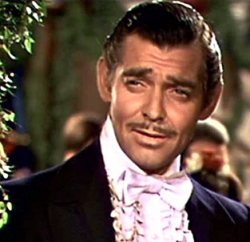
1960 – Actor Clark Gable (starred in over 60 films, including Mutiny On The Bounty, Gone With The Wind, San Francisco, Saratoga, and It Happened One Night, for which he won the Academy Award for Best Actor) died from an arterial blood clot, ten days after a severe heart attack at age 59.
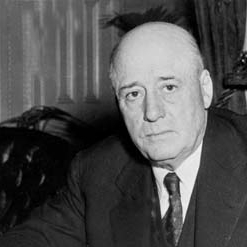
1961 – Congressman Sam Rayburn (D-TX), who served as the Speaker of the U.S. House of Representatives for 17 years, the longest tenure in U.S. history, died of cancer at the age of 79.

1961 – President John F. Kennedy decided to increase military aid to South Vietnam without committing U.S. combat troops. Kennedy was concerned at the advances being made by the communist Viet Cong, but did not want to become involved in a land war in Vietnam. He hoped that the military aid would be sufficient to strengthen the Saigon government and its armed forces against the Viet Cong. Ultimately it was not, and Kennedy ended up sending additional support in the form of U.S. military advisors and American helicopter units. By the time of his assassination in 1963, there were 16,000 U.S. soldiers in South Vietnam.

1966 – Dr. Samuel H. Sheppard was acquitted in his second trial on charges of murdering his pregnant wife, Marilyn, in 1954. Apart from the large unanswered question of guilt (which remain today), the Sheppard case deserves to be considered among the nation’s most famous because it produced a landmark U. S. Supreme Court decision on fair trial rights and launched the career of a flamboyant young defense attorney named F. Lee Bailey.
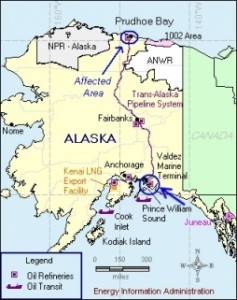
1973 – President Richard Nixon declared that America’s energy requirements had outpaced its production capacity and signed Senate Bill 1081 (Trans-Alaska Pipeline Authorization Act), which authorized the construction of an 800-mile pipeline – which crossed three mountain ranges and over 800 rivers and streams – to access oil from the North Slope of Alaska.
Nixon projected that the pipeline would eventually carry 2 million barrels of oil per day from Prudhoe Bay into the port at Valdez, Alaska, where tankers would then carry the precious cargo into the continental United States. Nixon sought to assure an increasingly vocal environmental movement that the planned pipeline – which he called the “single largest endeavor ever undertaken by private enterprise” – would be constructed and operated “under the most rigid environmental safeguards ever devised.”
Meanwhile, though, he asked Congress not to attach amendments to the bill that would have given federal agencies such as the Environmental Protection Agency, the Department of Natural Resources and the Department of Fish and Game regulatory power over the pipeline’s construction.
Oil began flowing through the pipeline on June 20, 1977. Although the pipeline increased domestic oil supplies, America continued to rely primarily on crude exports from the Middle East.
1999 – Construction began on a giant bonfire at Texas A&M University, the continuation of a tradition that began 90 years earlier. Two days later, the 59-foot-high pile (4 feet higher than authorized) of logs collapsed, killing 12 students and injuring another 27.

2001 – British author J.K. Rowling’s star creation – bespectacled boy wizard Harry Potter – made his big-screen debut in Harry Potter and The Sorcerer’s Stone. The film, which starred Daniel Radcliffe in the title role, went on to become one of the highest-grossing movies in history.
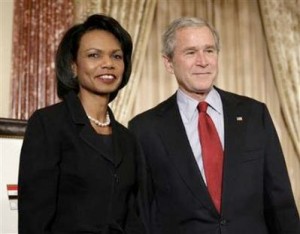
2004 – President George W. Bush picked National Security Adviser Condoleezza Rice to succeed Colin Powell as Secretary of State.
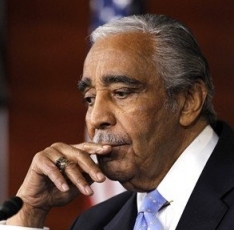
2010 – U.S. Rep. Charles Rangel was convicted on 11 of 13 charges related to financial misconduct, prompting fellow lawmakers to censure the 80-year-old New York Democrat.

2010 – Britain’s Prince William announced his engagement to Kate Middleton.
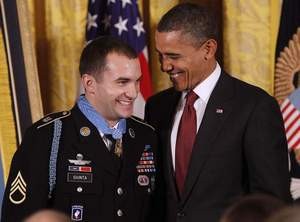
2010 – President Barack Obama presented the Medal of Honor to Army Staff Sgt. Salvatore Giunta, the first living service member from the Afghanistan and Iraq wars to receive the nation’s top military award.
Compiled by Ray Lemire ©2015 RayLemire.com. All Rights Reserved.
As always…thanks for the history lessons.
Informative and interesting…Some new to me and some remembered.
And as always… thank YOU for reading them 🙂